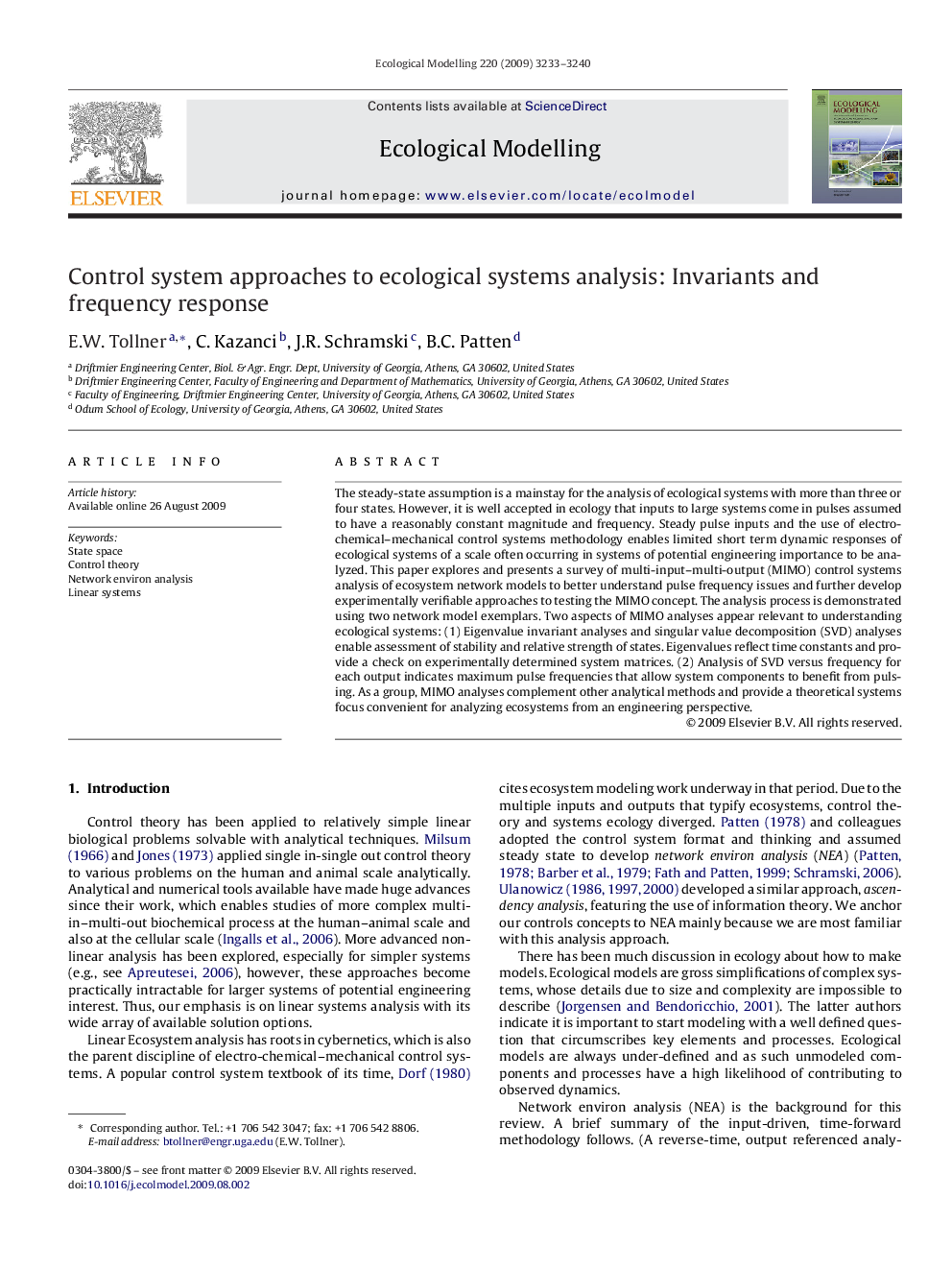| Article ID | Journal | Published Year | Pages | File Type |
|---|---|---|---|---|
| 4377538 | Ecological Modelling | 2009 | 8 Pages |
Abstract
The steady-state assumption is a mainstay for the analysis of ecological systems with more than three or four states. However, it is well accepted in ecology that inputs to large systems come in pulses assumed to have a reasonably constant magnitude and frequency. Steady pulse inputs and the use of electro-chemical-mechanical control systems methodology enables limited short term dynamic responses of ecological systems of a scale often occurring in systems of potential engineering importance to be analyzed. This paper explores and presents a survey of multi-input-multi-output (MIMO) control systems analysis of ecosystem network models to better understand pulse frequency issues and further develop experimentally verifiable approaches to testing the MIMO concept. The analysis process is demonstrated using two network model exemplars. Two aspects of MIMO analyses appear relevant to understanding ecological systems: (1) Eigenvalue invariant analyses and singular value decomposition (SVD) analyses enable assessment of stability and relative strength of states. Eigenvalues reflect time constants and provide a check on experimentally determined system matrices. (2) Analysis of SVD versus frequency for each output indicates maximum pulse frequencies that allow system components to benefit from pulsing. As a group, MIMO analyses complement other analytical methods and provide a theoretical systems focus convenient for analyzing ecosystems from an engineering perspective.
Related Topics
Life Sciences
Agricultural and Biological Sciences
Ecology, Evolution, Behavior and Systematics
Authors
E.W. Tollner, C. Kazanci, J.R. Schramski, B.C. Patten,
